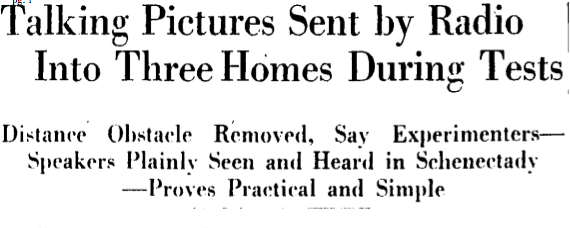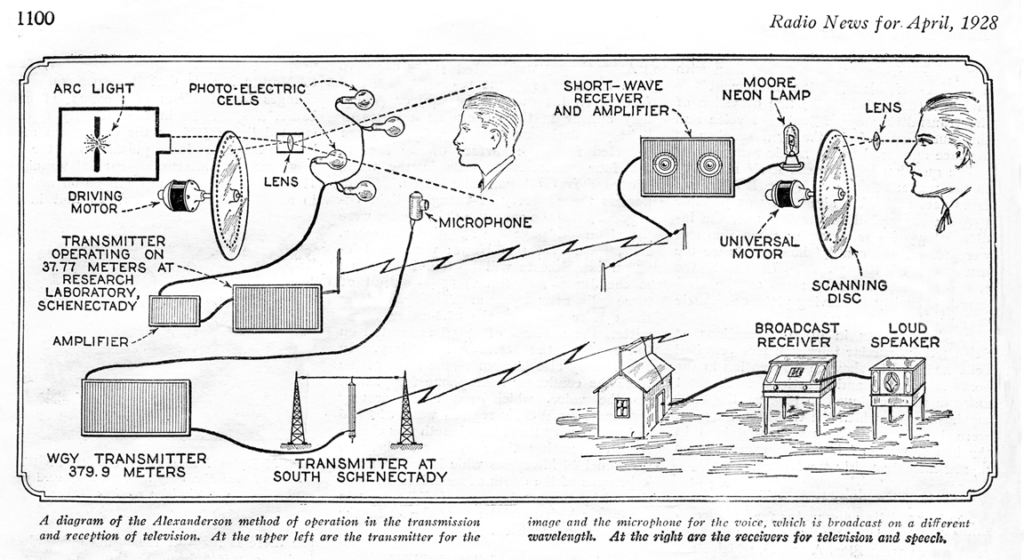
Since we were just speaking of Ernest Alexanderson’s contributions to radio and television, here’s the story of that first three-mile transmission, as published in the Christian Science Monitor, Jan. 14, 1928:
“Radio transmission of both sight and sound is near realization. Radio waves have carried both audition [sic] and vision into homes here to prove the engineers’ contention that television is ready to leave the laboratory for the home. Some further simplification and a regulation of cost of apparatus is all that stands in the way of household use of television, they declare.
“A small audience, seated in a home here, saw, in minute detail, the actions of artists whose voices they heard from a common radio loud speaker. The transmitter was located three miles away; the demonstration was given newspaper men by the General Electric Company, in whose laboratories the television transmitter and the home receiver were developed.” Considering that talking pictures (with sound synchronized on the film) weren’t even a year old, this was pretty remarkable. Those lucky enough to be invited to a viewing saw a phonograph cabinet with a three-inch square opening in which the picture tube sat.
“First was seen merely a streak of parallel lines, but under the manipulations of the operator these disappeared and a luminous field appeared. As a voice came over the loudspeaker saying that the demonstration was about to begin, the face of the speaker was seen. He was followed by a ukulele performer, but due to the limited size of the screen merely the face was visible. A girl appeared with a book in her hand, and when she held a page to the transmitters, even pictures on the page could be seen. A tie which she said was highly colored, however, merely appeared as a piece of flat cloth without any distinguishing colors.”

Alexanderson was demonstrating a form of mechanical television, by which spinning discs captured images in frames. Out on the west coast, Philo Farnsworth had already demonstrated the most rudimentary form of electronic television, but it would be some years before that technology would overtake the mechanical version.
“Television, engineers explained, is based on the conversion of light beams into radio impulses through the use of photo-electric cells. Through a rotating or ‘scanning’ disc, in which are more than two-score minute holes, is projected a brilliant light. The light, passing through the rotating disc, throws fleeting beams of brilliance across the subject’s face. Each rotation of the disc literally paints a complete picture and the high speed of the disc renders continuity of a moving picture. The picture so drawn by each rotation of the disc is imposed on the photo-electric cells, converted into radio impulses and as such are radiocast to be picked up by the receiver.”
There are several references to the demonstrations having taken place in three homes, but the only address we’ve seen for certain is that of Alexanderson’s home, which was 1132 Adams Road in the GE Realty Plot.
